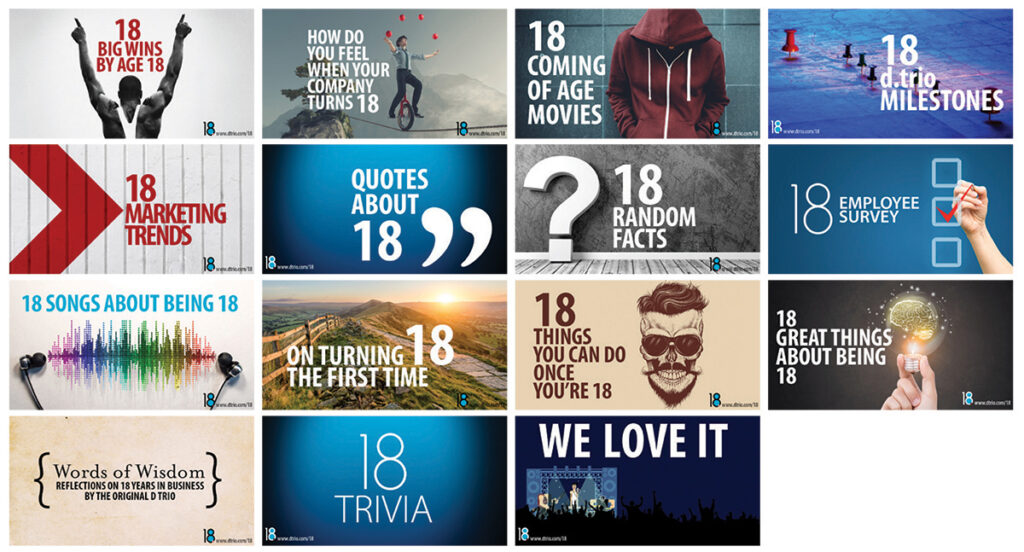If you follow the marketing world, you probably know that marketing automation is an exciting tool being adopted by more and more marketers these days. But the key word here is tool. Like other components of a successful marketing program, marketing automation is not a complete solution. It’s just one part of the whole—one tool in your marketing toolbox. Problem is, it often gets a lot more credit than it deserves.
Maybe it’s the word automation that seems so appealing. It makes it sound as if this one technology is the answer to all of our problems. Sort of like:
“If I could just automate all my marketing, my job would be so easy!”
“Thanks to our new marketing automation program, we’ll be able to downsize our marketing department and save a ton a money!”
“Automation? Woo-hoo! My days of sweating to write blog posts are finally over!”
Sorry to deliver the bad news, but marketing automation isn’t the magic bullet many people think.
While a solid, well-implemented marketing automation program comes with a nice list of benefits, it also has its limitations. Like any tool, it’s merely a means to an end, not an end in itself. And, like any tool, the results you get depend more on your skill in using the tool than on the tool itself. In the hand of a professional artist, a paintbrush is a powerful tool. In the hand of a spider monkey, not so much.
Let’s back up for a moment to briefly talk about what marketing automation is in the first place. Basically, it’s a kind of technology consisting of different software platforms designed to help organizations, agencies, and marketing departments automate repetitive tasks. These can include things like sending emails, making social media posts, creating landing pages, and managing other website actions. A reputable automation tool used effectively can save time, help generate leads, streamline reporting and analytics, and make it easier to direct specific messages to specific audiences.
One of the challenges with marketing automation, however (in addition to its relatively high cost and fairly steep learning curve), points back to that word again—automation. It’s just so darn seductive. Sure, it sounds like a marketer’s one-size-fits-all solution—one can save them from having to do the hard work of developing strategy, relevant content, and compelling creative. But actually, the opposite is true. That’s because the more often you stay in touch with your customers and prospects, the greater the need for a constant stream of interesting messaging and fresh content. Otherwise you may bore—or even worse, annoy—the very people you’re trying to attract.
To do marketing automation well, you need to start with a clear, well thought-out, well-researched strategy. You need to know your objectives. What do you want to get out of your marketing automation platform—leads, sales, website traffic, ecommerce traffic?
You also need to identify your target audiences, understand them, and learn how best to interact with them. The upfront strategic work you do will make a big difference in getting the kind of results you want.
Examining your goals will also help you prepare for possible changes down the road. Let’s say you’re a B-to-B company right now. But maybe you see your company expanding into the B-to-C market. In this situation, you’d want to make sure the automation platform you choose has the flexibility to adapt to your changing needs—and the new directions you may want to take your future marketing.
Garbage in, garbage out
Before your company invests in marketing automation, invest the time in the training, support, and systems to do it right. Hold your automated marketing work to the same standards of all the other communications you create. Your marketing—no matter the vehicle—should always be interesting, relevant, professional, and on brand. There’s something about the nature of automated communications that makes people more inclined to cut corners. As a tool, automation can be extremely helpful. But a powerful software platform that’s not used in conjunction with a smart targeted strategy and meaningful content will only waste time and money.
Even worse, with a poorly run program, you may run the risk of doing more harm than good. How? By putting haphazard, rushed messages out into the world. Or by pushing customers away with dull, repetitive, excessive, or irrelevant content. Or directing customers to landing pages that don’t meet their expectations. These types of mistakes can do more than squander a chance to make a sale. They can potentially turn off prospects permanently, damaging your brand.
To be effective, a marketing automation platform should serve your needs and goals, not the other way around. Just because the technology has gotten a lot of attention lately as the next hot thing, doesn’t mean you should drop everything and dive in headfirst. Successful marketing campaigns always start with careful planning and a well-defined strategy. So step back and take the time to figure out your objectives. Hire a marketing agency if you need to. And then choose the best mix of channels and tools to help you get where you want to go. Sure, marketing automation might play a significant role in your plan. But if you start with your goals, and not the tool itself, you’ll be in a much better position to get the quality results you want.
![cat[&]tonic](https://cat-tonic.com/wp-content/uploads/candt_logo-rw.png)




